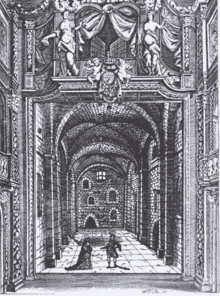
The Restoration
The Restoration period in English theatre, which roughly spans from 1660 to 1700, marks a revival of theatre after the Puritan ban during the English Civil War and the Interregnum. When Charles II was restored to the throne in 1660, public performances of plays resumed, and the period saw many significant developments and key events in theatre history.
The Restoration marked the return of theatres after they had been closed by the Puritans during the English Civil War (1642–1660). Charles II, who had lived in exile in France, had been influenced by French theatre and granted licenses to new theatres. Two major companies were established:
The King's Company (headed by Thomas Killigrew)
The Duke's Company (headed by Sir William Davenant).
One of the most revolutionary changes was the introduction of women as actresses. Before the Restoration, female roles were played by young boys. Actresses like Nell Gwyn, Elizabeth Barry, and Anne Bracegirdle became famous during this period.
Restoration comedy became known for its wit, sexual innuendos, and satirical nature. The comedies often featured characters such as fops, rakes, and witty heroines, and they critiqued social manners and courtly life. Playwrights such as William Wycherley (The Country Wife, 1675), George Etherege (The Man of Mode, 1676), and Aphra Behn (The Rover, 1677) were influential in shaping this genre.
Another popular genre was heroic tragedy, which often dealt with themes of honor, love, and heroism in a grandiose style. John Dryden was a leading figure in this genre, with works like All for Love (1677) and The Conquest of Granada (1670-71).
Theatres began incorporating a proscenium arch (a large frame around the stage) and movable scenery, which was influenced by French and Italian theatre. This allowed for more elaborate set designs and special effects, enhancing the visual experience.
Aphra Behn was the first professional female playwright in England. Her success marked a significant development for women in the literary and theatrical worlds. She wrote numerous plays, including The Rover (1677), which was very popular during the Restoration.
Charles II granted royal patents to two theatres (Duke's and King's Companies), allowing them a monopoly on legitimate theatre productions. These theatres, Drury Lane and Lincoln's Inn Fields, became central to Restoration theatre and were later combined into a single company in 1682.
By the late 1690s, the bawdy nature of Restoration comedies led to criticism from moral reformers. The audience's tastes began shifting toward more sentimental and moralistic plays, signaling the decline of the typical Restoration style. The genre was increasingly seen as immoral, contributing to a decline in popularity.
Restoration theatre often reflected the political and social climate of the time. Plays frequently satirized the aristocracy and social manners. Playwrights like John Dryden also wrote political allegories, with his Absalom and Achitophel (1681) being a famous example, though it was more a poem than a play.
The Restoration period was a time of great innovation and experimentation in English theatre. It brought about significant changes that influenced the course of theatre history, particularly through the rise of professional actresses, the development of distinct theatrical genres, and the introduction of new staging technologies
during lessons we focused on restoration comedy, we were put into groups and had to act out recent news stories, however we had to exaggerate are characters in order to make the scene more comical. for example we acted out a debate between Trump and Harris, we made the rally overly loud with a lot of shouting and added walkout music for Trump to add the comical effect. this helped us to understand the restoration period as it gave us an insight into new styles of theatre at the time.
